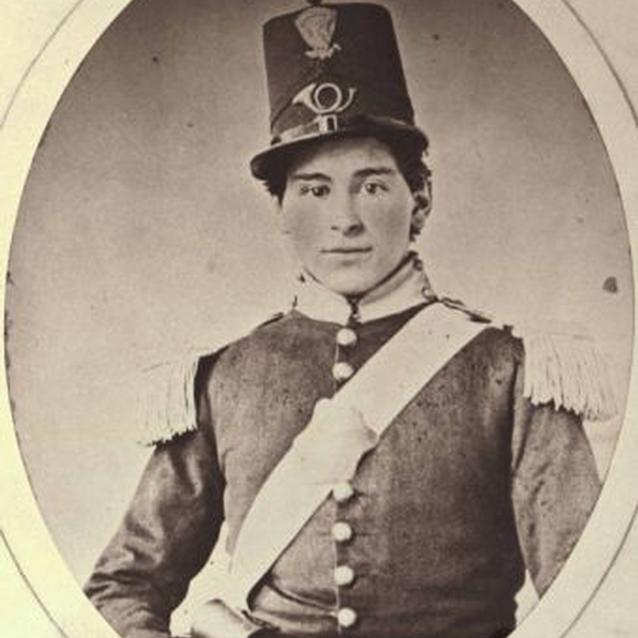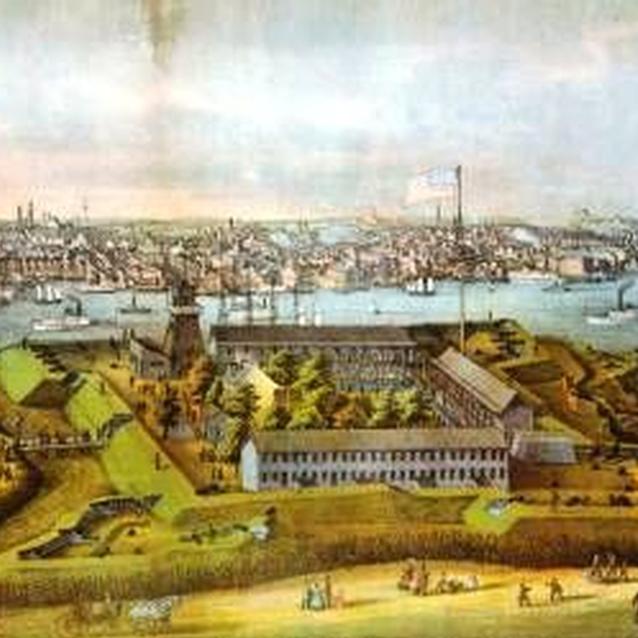Following the secession of the Southern states and the bombardment of Fort Sumter, President Abraham Lincoln called for 75,000 men to be raised from the militia of the states in order to put down the rebellion. These troops were to be transported to Washington, D.C., so that they might protect the capital.
"Stones flew thick and fast. Rioters rushed at the soldiers and attempted to snatch their muskets, and at least on two occasions succeeded. With one of these muskets a soldier was killed. Men fell on both sides." Baltimore Mayor George Brown
The Riot

National Park Service
On April 19, 1861, only five days after the surrender of Fort Sumter, the situation in Baltimore exploded into violence. The 6th Massachusetts Infantry arrived at the President Street Station and began the process of changing trains. The cars were disconnected and pulled by horses down Pratt Street to Camden Station. As the process continued, a crowd gathered and with each moment it became more and more unruly. All but two of the cars had been transferred when the crowd blocked the tracks with timbers and anchors.
The two cars returned to the President Street Station and the soldiers disembarked to the howls and jeers of the mob. The troops then marched back down Pratt Street, led by a man carrying a rebel flag, and followed by the mob. At Gay Street some of the mob began tearing up paving stones and throwing them at the soldiers. Other men were seen brandishing pistols and muskets. Someone fired a shot.
The frightened officers ordered the troops to fire into the crowd. This angered the mob further, and they began to attack the soldiers with considerable ferocity. Citizens threw stones and bricks and fired shots at the soldiers. The soldiers returned the fire. Rioters, soldiers, and innocent bystanders fell dead and wounded. The Mayor bravely attempted to stop the battle without success. Then the police arrived.
George P. Kane, Mashal of Police, put his force between the two groups and escorted the troops to Camden Station, where they boarded the train and left Baltimore. The Pratt Street Riot was over. The riot resulted in the first casualty list of the war. Eight rioters, one innocent bystander and three soldiers were killed, twenty four soldiers and an unknown number of civilians wounded.
The Riot's Effects

Enoch Pratt Free Library
Baltimore quickly felt the effects of the riot. The Governor and Mayor called out the militia to prevent further bloodshed. When a threat was made against Fort McHenry, one of the militia units was sent to help the U.S. Army defend it. Knowing that there were secessionists in the militia ranks, the commander of the fort accepted the help on the condition that the militia must remain at least a half mile from the fort or he would fire on them.
In May, less than a month after the riot, Maj. Gen. Benjamin Butler and the 6th Massachusetts Infantry entered the city and built earthworks on Federal Hill. Cannon were placed in the works so that they could be fired on the city. Civilians who had demonstrated secessionist sympathies were arrested and taken to Fort McHenry, where they were held without charge. Major Morris, the commanding officer at Fort McHenry, suspended the Habeas Corpus privileges of those prisoners, and Baltimore fell under military rule.
Finally, in June 1861, the Maryland legislature considered the question of secession, voting against it while stating their Constitutional right to secede if they wished. By that time, however, the Old Line was an occupied state, and the choice of secession no longer truly existed.
Last updated: February 3, 2015
